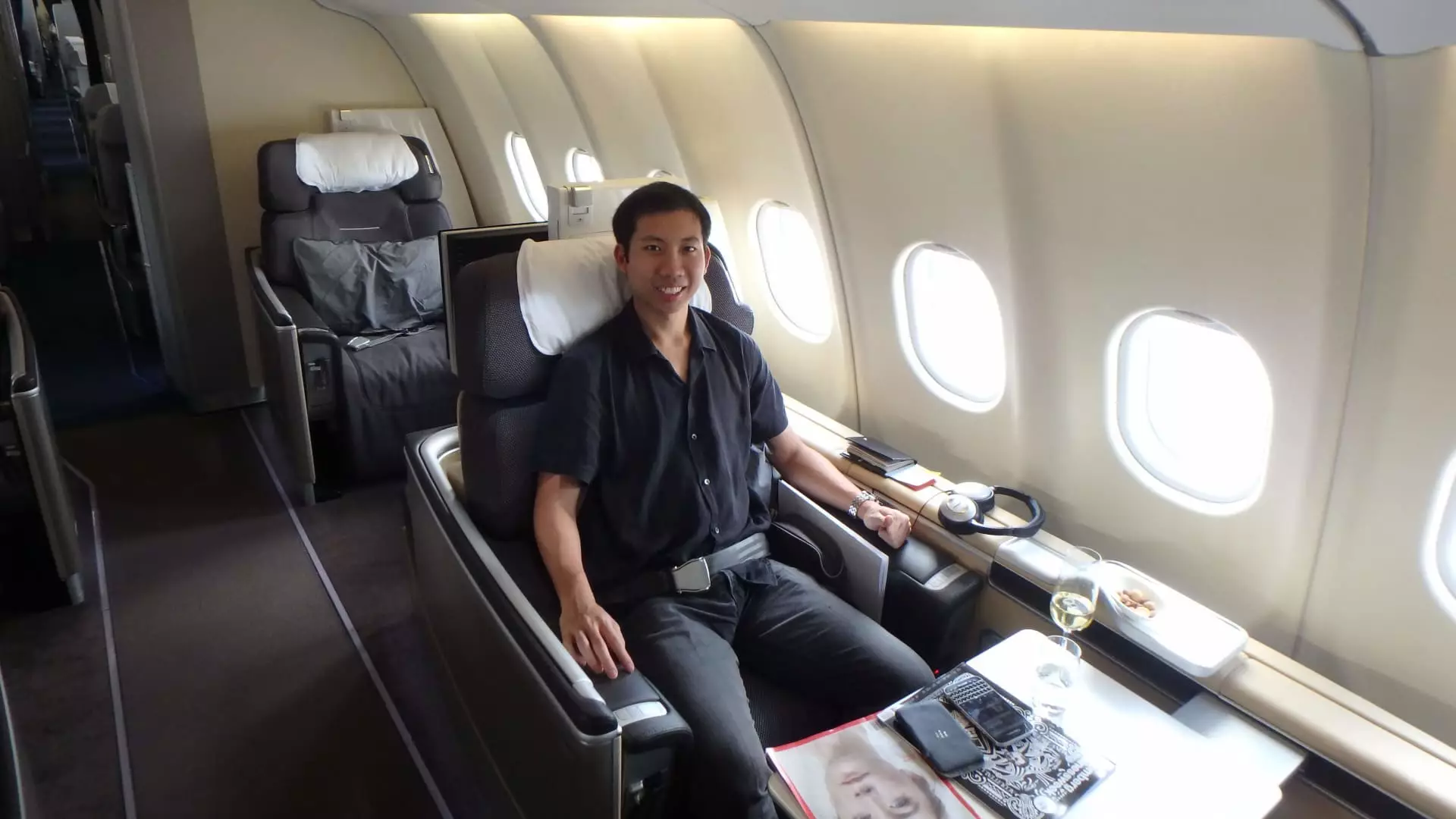Traveling by air is an experience that most people around the world relish, but few get to enjoy premium seating options like business and first class, particularly on international flights. For those fortunate enough to board these luxurious cabins, the experience often feels surreal, yet it comes at a premium price. As airlines strive to offer plush travel experiences, the cost gap between economy and premium classes can be daunting, especially on route-heavy networks such as Singapore Airlines. Understanding how to navigate this financial disparity can open doors to a world of comfort and exclusivity.
Travelers planning a trip from Singapore to London will find an extensive pricing structure reflecting the disparity between seating classes. An economy class ticket, typically booked well in advance, costs around 1,700 Singapore dollars ($1,303) for a round trip. However, this cost skyrockets when one considers the business class fare at SG$6,300 and first class, which can exceed SG$13,000. While there is a smaller gap between classes on regional flights—for example, a round trip to Tokyo might cost SG$1,300 in economy, SG$4,200 in business, and SG$7,600 in first class—the essential reality remains: premium class flying is often associated with significant financial expenditure.
This stark reality provides insight into the demographics of travelers occupying these seats. Predominantly, the clientele consists of affluent individuals, business executives, or those who can access points through smart decisions regarding credit cards and loyalty programs. Given the high costs associated with premium flying, it becomes essential for potential business and first class passengers to strategize their spending to maximize their benefits.
One individual who has successfully navigated this intricate world of points is Aaron Wong, a former management consultant and founder of the travel blog The MileLion. Instead of spending exorbitant amounts on premium tickets, Wong leverages credit cards to secure his coveted business and first-class seats. He claims to fly between eight to nine premium-class flights each year, with some bookings coming at minimal cost.
Wong’s philosophy revolves around targeted spending that maximizes loyalty points. He stresses that the process isn’t simply about owning a single credit card that earns miles, but rather about employing a strategy involving multiple cards tailored to an individual’s spending behaviors. In his views, the essence of success in the “miles game” is found in diversifying one’s credit card arsenal—each card focusing on specific spending categories, such as dining, groceries, or travel. By understanding these nuances, Wong believes individuals can greatly enhance their opportunities for earning significant miles.
Consider Wong’s example of spending SG$30,000 on a credit card that earns 1.4 miles per dollar. The rewards from such a transaction would yield around 45,000 miles sufficient for a round trip economy ticket. However, by utilizing multiple cards that offer bonus miles—upwards of 4 miles per dollar—Wong suggests that the same expenditure could net 120,000 miles, which is feasible for a business class return flight to Cape Town.
Yet, while the pathway to these rewards appears enticing, Wong notes it is fraught with complexities. Tracking multiple cards and deciphering the fine print regarding bonus categories and exclusions is critical. For example, while some credit cards accumulate points differently, certain programs allow pooling of points, whereas others operate on rigid systems. For travelers engaged in regular spending, comprehending how to optimize such systems becomes immensely valuable.
Despite the allure of accumulating miles, Wong emphasizes a crucial principle: do not spend beyond necessity simply to earn rewards. He warns that while justifying additional expenditures for extra miles may be tempting, it can lead individuals down a slippery slope of unnecessary spending. This caution serves as a reminder that loyalty programs should enhance travel experiences—not dictate personal finance decisions.
Ultimately, while the journey toward accessing premium air travel through strategic mileage accumulation is undoubtedly rewarding, it isn’t devoid of hurdles. With careful planning and a well-thought-out credit card strategy, aspirants can unlock extraordinary flying experiences that align with their travel desires without incurring excessive costs. Embracing a mindful approach to travel expenses can help individuals achieve the luxury of flying high, turning the dream of premium class travel into a tangible reality without breaking the bank.

